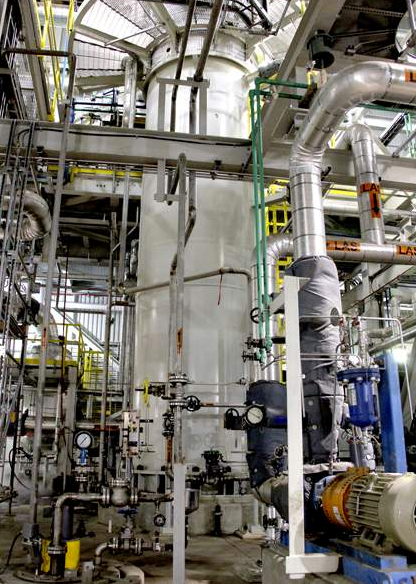It represents a miniscule portion of the overall $1.4 billion budget, but Shell’s Cansolv amine solution is playing a vital role in the Boundary Dam carbon and sulphur dioxide capture plans.
The liquid amine is used to capture all of the SO2 emitted by the No. 3 power unit and 90 per cent of the carbon dioxide.
The amine SO2 and CO2 are introduced in the absorber and pumped to a desorber where steam removes the SO2 with the amine then returning to the absorber. The flue gas from the SO2 absorber enters the CO2 absorber where it meets a different liquid amine and the product moves to the CO2 desorber where low pressure steam from BD No. 3 turbine removes the carbon dioxide.
“It may be a small part of the overall costs, but it’s the largest sale our division has made,” said Devin Shaw, the business development representative for global sales for Shell Cansolv. He is also their strategic manager for CCS projects.
“There’s a lot of money being spent on clean coal solutions these days and it’s been a non-stop global trotting situation for me lately. I guess I’ve been to pretty well every developed country where they have environmental policies and looking for solutions. I’ve been to Saudi Arabia, Kuwait, UAE, Qatar … anywhere they are looking at enhanced oil recovery and looking at climate change.”
Shaw said one tonne of CO2 can deliver up to three barrels of oil, possibly four.
He said the sale to SaskPower’s project has been the biggest one for Shell CanSolv to date and they had to reach beyond traditional suppliers to arrange storage and transportation.
Once the amine is in place, the bulk of it is regenerated throughout the capture system with only slight losses on each cycle. Shaw said over the course of a full year, there might be a 20 per cent total loss of amines that will have to be replaced.
“For us, the deal was significant. I know it pales in overall numbers for the entire project but for our division, it was big.”
Shaw said the whole premise of introducing amines for the capture process hinges on being environmentally friendly, so the negative impact from that perspective is very low and SaskPower provided some flexibility to ensure any environmental errors are handled easily and correctly.
“It was a big undertaking, but all went smoothly and there were no technical issues,” said Shaw, who attended the two-day symposium in Regina that preceded the official launching at Boundary Dam on Oct. 2.
“It’s not new technology. In fact that part of it dates back 80 years or more, it’s how it’s used now,” said Shaw.



